
When you get that response to a suggestion or comment, you can be sure the speaker does not believe what you are saying is even possible. ▼ Photo source: abcnews.go.com/pigs-fly ▼
 Real pigs can’t fly. We have visual proof they can’t fly commercial, either. The young lady in the picture was put off a US Airways flight out of Connecticut the plane with her emotional-support pig because, according to American Airlines, the parent company of US Airways, “the pig became disruptive, and the woman was asked to leave.” Actually, the pig defecated in the aisle and then began to howl. |
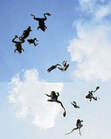
You’re likely to get this response to the same suggestion or comment, but in this case the speaker is incorrect. It can, and occasionally does rain frogs … and fish and other things.
Throughout history records document eye-witness reports of fish, frogs, and other small living things falling from the sky either “like rain” or “in the rain.” Even if you leave out Exodus, “documented” tales of raining fish and frogs are reported by Roman naturalist, Pliny The Elder, as far back as the first century AD. No doubt the phenomenon, however rare, has been around since ancient times.
Passover Greeting Card - Drawing: C.McCoy
Photo source: amazon.com/NobleWorks-Raining
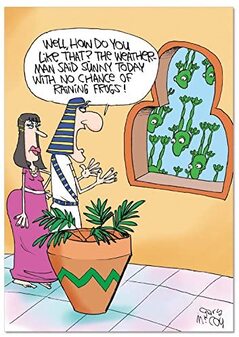
In July of 1901, Minneapolis, Minnesota, suffered a frog downpour. A newspaper reported: “When the storm was at its highest…there appeared as if descending directly from the sky a huge green mass. Then followed a peculiar patter, unlike that of rain or hail. When the storm abated the people found, three inches deep and covering an area of more than four blocks, a collection of a most striking variety of frogs…so thick in some places [that] travel was impossible.” weirdhistorian.com/raining-cats-and-dogs-is-one-thing-but-frogs-and-fish/
According to Julia Layton, science.howstuffworks.com, the frequency of such events has been increasing. “For unknown reasons, Britain appears to be especially susceptible in recent years. The cause of frog rain in general is less mysterious, although still a bit of a brow-furrower at times. It's also just as gross as many of us imagine. That final scene in the 1999 film Magnolia, which left most movie goers jaw-droppingly disgusted and a little impressed, is apparently a pretty accurate portrayal of the phenomenon, according to newspaper accounts.”
THE SCIENCE OF NON-AQUEOUS RAIN
There is a fairly understandable scientific explanation for this weird weather event which is related to watery tornados or waterspouts -- essentially whirlwinds that pick up water. These are usually caused by the high-pressure system preceding a severe thunderstorm.
| Photo Credit: Patricia Vazquez, Myshot - Photo Source: nationalgeographic.org/waterspout ► ◄ Photo credit: Harald Richter (Public Domain) NSSL of NOAA Photo Source: en.wikipedia.org/Tornado |
First of all, remember that frogs, lizards, insects, and fish can weigh only a few ounces, and these storms are very powerful. They rip off roofs and pick up cars and trucks.
Second, the center of the waterspout is a low-pressure tunnel within a high-pressure cone and picks up light objects. Since these are formed over large bodies of water, they suck up water and low-weight water creatures. Items carried in the vortex can be carried over land as the storm moves. The same thing happens with a land-based tornado, which can pick up water and creatures from lakes, ponds, and other water sources. Professor Ernest Agee from Purdue University says, “I’ve seen small ponds literally emptied of their water by a passing tornado. So, it wouldn’t be unreasonable for frogs (or other living things) to ‘rain’ from the skies” (loc.gov/everyday-mysteries)
So actually, a storm can pick up anything if it is strong enough, and things can get carried for even hundreds of miles in the vortex, so you don’t need to be near a frog pond to get frogs in your rain. The most common living, non-aqueous item to “rain” is fish, since most water spouts form over the ocean. Birds are not uncommon victims, particularly during migrations. Blackbirds fell from the sky in Beebe, Arkansas, in 2010.
Writer Julia Layton’s description of what happens when the critters land, is worth repeating.
“But it's when the frogs, fish and other water animals hit the ground that things really get gross. It's unlikely they survive the journey, what with the speeding low-pressure vortex and the impact once that vortex dissolves. Usually, the frogs die, although it's unclear when exactly that happens -- during the trip or as a result of the fall. However, sometimes the frogs luck out. When it rained frogs in a small town in Serbia in 2005, people walked outside after the storm to see their streets blanketed in frogs trying to hop their way back to water.”
RECENT INCIDENTS
Ancient happenings are always subject to skepticism. Very little can be “proved” about what happened in the ancient past. From the medieval period we have more unreliable legends and pieces of art work depicting the phenomenon.

Photo source: weirdhistorian.com/raining-frogs
When I searched for more recent events, I found many mentioned, but not many photographs. That makes sense, since these circumstances are localized and unpredictable. Unless you’re there with a camera for some other purpose, it is likely you’d lose the opportunity. Wikipedia has a list of reported occurrences. I’ve repeated only a few below, mostly reported in the US.
Raining fish in Northern Argentina – 1989▼ Photo source: leahsweather.wordpress.com/2012
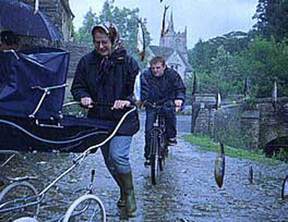
● Knighton, Powys, Wales, 18 August 2004
● Kerala State, India, February 12, 2008
● Bhanwad, Jamnagar, India, October 24, 2009
● Philadelphia, Pennsylvania, 9 September 2016
● Dire Dawa, Ethiopia, 20 January 2016
● Mexico, Tamaulipas, Tampico, 26 September 2017
● Oroville, California, 16 May 2017
● Jaffna, Sri Lanka, 7 November 2017
● New Jersey, USA, 7 April 2020
Frogs
● Calgary Canada, August 4, 1921
● Odzaci, Siberia, June 4, 2005
● Ishikawa Prefecture, Japan, June 2009 (occurrences reported throughout the month)
● Rákóczifalva, Hungary, 18–20 June 2010 (twice)
● Cabo Polonio, Uruguay, Since 2011 (twice)
THE MIRACLE OF LLUVIA DE PECES
Residents of Yoro, Honduras have only one claim to fame. They insist that every year they have a Rain of Fish. Some years it occurs more than once, but always after a violent storm. After such a storm, residents fill the streets carrying baskets and collect sardine-like fish from the ground. The fish that are said to fall as rain are not indigenous to the local area. The Hondurans see it as a miracle and a blessing, since this is essentially a poor area and the only time they have fish to eat.
Photo source: allthatsinteresting.com/fish ▼ Photo source: www.youtube.com/ ▼
The story sounded fishy to me. The first thing I noticed in the photographs is that all the fish are on the street, and none on the sidewalks, plus the fish look bigger than sardine-like, whatever that means. Nevertheless, the town folk insist it’s real and not a hoax or a benevolent fish-donor who waits for the first big storm in May or June. I didn’t find any documents or articles that assert this is not a real meteorological event.
In 1970 a team from National Geographic, already on assignment in the area, were able to examine the grounded fish after a big storm. The fish turned out to be completely blind, so scientists suggested that they must live in underground caves or rivers where they are unexposed to light and that the flooding after a heavy rain forces them to the surface. Another possibility was a waterspout from the Atlantic ocean about a hundred miles away carries them there.
Since the real reason for the phenomenon hasn’t been pinned down by scientists, it must not matter to anyone except the residents of Yoro. Although the legend of the first recorded fish rain occurred in 1855, in 1996 the locals organized a festival which is now an annual event which takes place after the first big rain in the spring.
MY ADVICE – ALWAYS CARRY AN UMBRELLA AND A CAMERA IN THE RAIN.
□
Sources:
https://science.howstuffworks.com/nature/climate-weather/storms/rain-frog.htm
https://en.wikipedia.org/wiki/Rain_of_animals
https://globalnews.ca/news/4371433/calgary-raining-frogs/
https://www.loc.gov/everyday-mysteries/item/can-it-rain-frogs-fish-and-other-objects/
https://www.popsci.com/weirdest-weather-ever/
https://www.patheos.com/blogs/laughingindisbelief/2017/08/america-copes-raining-frogs-bloody-red-waterways/
https://www.theguardian.com/news/2011/may/26/weather-watch-raining-frogs
https://www.livescience.com/44760-raining-frogs.html
https://www.weirdhistorian.com/raining-cats-and-dogs-is-one-thing-but-frogs-and-fish/
https://www.news24.com/SciTech/News/Its-raining-frogs-in-Serbia-20050607
https://commonplacefacts.wordpress.com/2016/01/19/todays-forecast-cloudy-with-a-chance-of-amphibians/
https://leahsweather.wordpress.com/2012/11/28/seriously-there-really-is-such-a-thing-as-non-aqueous-rain/
https://abcnews.go.com/US/proof-pigs-fly/story?id=27222136
https://allthatsinteresting.com/fish-rain-lluvia-de-peces
https://www.youtube.com/watch?v=lF3ub0bpneI
https://en.wikipedia.org/wiki/Lluvia_de_Peces
Further reading
Chandler, Barb. "Froggy weather." Weatherwise, v. 57, Jan./Feb. 2004: 42.
Christian, Spencer, and Antonia Felix. Can it really rain frogs?: the world's strangest weather events. New York, Wiley, 1997. 121 p. (Juvenile)
Corliss, William. Tornados, dark days, anomalous precipitation, and related weather phenomena: a catalog of geophysical anomalies. Glen Arm, MD, Sourcebook Project, c1983. 196 p.
Dennis, Jerry. It's raining frogs and fishes: four seasons of natural phenomena and oddities of the sky. New York, HarperCollins, c1992. 323 p.
Englebert, Phillis. The complete weather resource. Detroit, UXL, c1997-2000. 4 v.
"Frogs fall from the sky." Herald sun, Melbourne, Australia, June 8, 2005. p. 2.

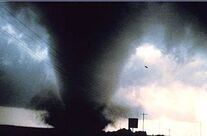
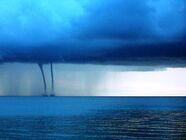

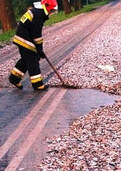
 RSS Feed
RSS Feed